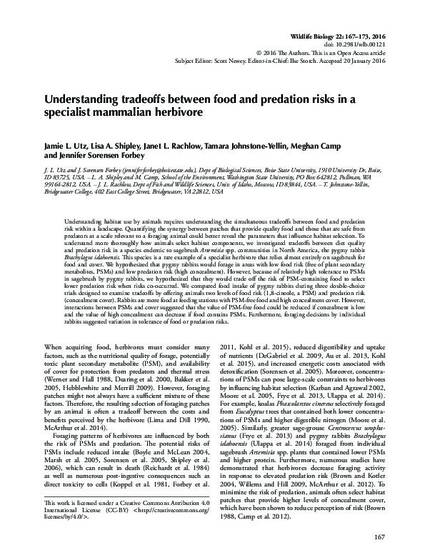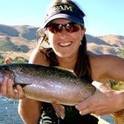
Understanding habitat use by animals requires understanding the simultaneous tradeoffs between food and predation risk within a landscape. Quantifying the synergy between patches that provide quality food and those that are safe from predators at a scale relevant to a foraging animal could better reveal the parameters that influence habitat selection. To understand more thoroughly how animals select habitat components, we investigated tradeoffs between diet quality and predation risk in a species endemic to sagebrush Artemisia spp. communities in North America, the pygmy rabbitBrachylagus idahoensis. This species is a rare example of a specialist herbivore that relies almost entirely on sagebrush for food and cover. We hypothesized that pygmy rabbits would forage in areas with low food risk (free of plant secondary metabolites, PSMs) and low predation risk (high concealment). However, because of relatively high tolerance to PSMs in sagebrush by pygmy rabbits, we hypothesized that they would trade off the risk of PSM-containing food to select lower predation risk when risks co-occurred. We compared food intake of pygmy rabbits during three double-choice trials designed to examine tradeoffs by offering animals two levels of food risk (1,8-cineole, a PSM) and predation risk (concealment cover). Rabbits ate more food at feeding stations with PSM-free food and high concealment cover. However, interactions between PSMs and cover suggested that the value of PSM-free food could be reduced if concealment is low and the value of high concealment can decrease if food contains PSMs. Furthermore, foraging decisions by individual rabbits suggested variation in tolerance of food or predation risks.
This document was originally published in Wildlife Biology by the Nordic Board for Wildlife Research. This work is provided under a Creative Commons Attribution 4.0 license. Details regarding the use of this work can be found at: http://creativecommons.org/licenses/by/4.0/. doi: 10.2981/wlb.00121
Available at: http://works.bepress.com/jennifer_forbey/31/
